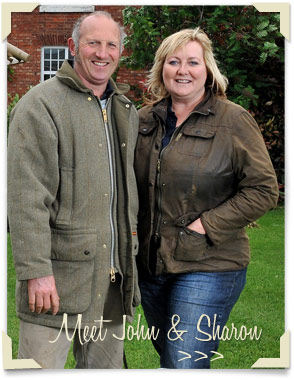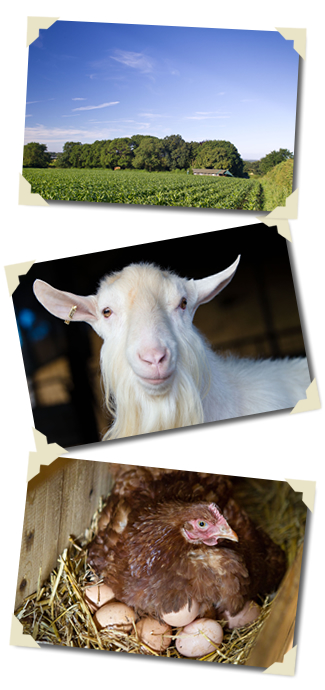
Osbaston House Farm
Osbaston House Farm covers 250 acres of rolling Leicestershire
countryside. Nestled on the edge of the National Forest, the land
includes mature woodland, arable and grassland. The Earp's have been
custodians of Osbaston House Farm for nearly 100 years. John is the
fourth generation of Earp's to farm the land.
For nearly 100 years the Earp family bred British Friesians and managed
a traditional dairy herd farm. In 2002 with the advent of falling milk
prices, John Earp courageously and successfully diversified the farm
business and became one of a handful of specialist dairy goat farmers in
the UK. The most important part of the farm is the goats, a playful
gang; they are all bred from the best of three British breeds: Saanen,
Toggenburg and Alpines. Goats are very affectionate, intelligent
animals, endearing and inquisitive. Twice a year we rear groups of kid
goats, caring lovingly for them from a few days old until they reach
their playful 'teenage' stage at around ten weeks old. They flourish
together with their friends, living and playing in small groups, growing
up in their 'teen' accommodation until they are nine months old. We
milk a thousand adult goats twice a day, and this is the life blood of
the farm, we are dairy farmers!
Field crops
Wheat, we grow approximately 70 acres of feed wheat every year. We sell
the crop on for animal feed and we use the straw from the wheat for
animal bedding. 70 acres of wheat feed makes nearly 300 big square
bales.
Maize - in the United Kingdom maize is grown for silage unlike in warmer
drier countries where it is grown for grain. Maize is a domesticated
form of wild grass, first cultivated over 5,000 years ago in tropical
Mexico that produces an adaptable and productive grain. We grow 75 acres
of maize on the farm and this will feed the goats for 12 months.
Livestock like the palatable silage and it also produces much less
effluent than grass.
Goats
The most important part of the farm is the goats. A playful gang, they are all bred from the best of three British breeds: Saanen, Toggenburg and Alpines. Goats are very affectionate, intelligent animals, endearing and inquisitive.
Four times a year we rear groups of baby ‘kids’, caring lovingly for them from a few days old until they reach their playful 'teenage' stage at around eight weeks old. They flourish together with their friends, living and playing in small groups, growing up in their 'teen' accommodation until they are nine months old. Sometimes we sell goats at this age, known as 'goatlings' on to other goat farms. We also have a small pedigree herd of hard working male, Billy goats. We are often asked why Billy goats smell like old socks, it’s because they have musk glands behind their horns to make the girls chase after them!
Hens
We rear our own hens on the farm and have approximately one hundred, a mixture of famous rare breeds, light Sussex, cuckoo marans, bluebells, leghorns and legbars. In the breeding season we lovingly raise the newly hatched chicks.
�2014 The Dandelion Hideaway. All Rights Reserved.









